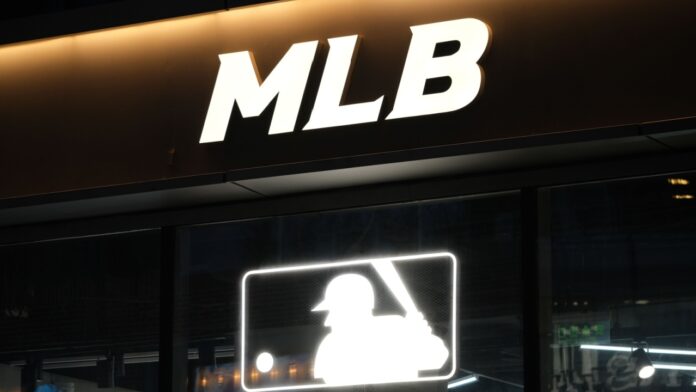
In Major League Baseball, fans often focus on the numbers, batting averages, home runs, strikeouts, and pitching ERAs. But behind those statistics lies something less visible and equally crucial: leadership inside the clubhouse. Veteran players who take on this responsibility shape how their teammates think, work, and respond to challenges.

A strong clubhouse leader keeps the team focused and unified through the long grind of a 162-game season. Without that leadership, even the most talented teams can struggle to stay cohesive. This article explores why clubhouse leaders matter, how they impact success, and what makes their presence so vital in today’s MLB.
Clubhouse Leaders Shape Culture and Identity
A clubhouse leader is more than just an experienced player. They are trusted voices who model professionalism, accountability, and team-first behavior. Strong leaders influence how the clubhouse feels day to day. They set expectations not only through their words but also through consistent action.
Building a Shared Identity
Winning teams often share a clear identity. It could be about resilience, belief, or unity, qualities that define how players approach the game. Veteran leaders reinforce that identity, reminding younger players what it means to wear the team’s uniform and how to handle both success and failure.
When everyone understands the mission and trusts one another, that shared mindset becomes a competitive advantage. It strengthens chemistry and helps the team play with purpose.
Bridging Gaps and Maintaining Unity
MLB clubhouses bring together players from many different countries and backgrounds. This diversity can be a major strength, but it also presents challenges in communication and connection. A good clubhouse leader recognizes this and helps bridge gaps between players.
Whether it’s supporting international teammates adjusting to life in the U.S. or making sure no one feels left out, their influence builds unity and trust. When players feel included and supported, performance improves naturally.
Managing the Long Season and Adversity
An MLB season is long and demanding. Between constant travel, fatigue, and slumps, even top teams face emotional and physical strain. Strong clubhouse leaders help the team maintain morale and focus.
They remind teammates to stay steady through losing streaks and keep energy levels high through long road trips. Their presence can prevent frustration from spreading and ensure the group stays centered on its goals.
How Clubhouse Leaders Translate Into On-Field Success
Leadership off the field often shows up on the field in ways that don’t always make the stat sheet. The habits and values built inside the clubhouse influence performance when the pressure is highest.
Accountability and Preparation
The best clubhouse leaders are usually the most prepared. They show up early, put in the work, and hold themselves accountable first. This creates a ripple effect across the roster. When a respected veteran consistently models the right habits, teammates tend to follow.
Over time, accountability becomes part of the team’s identity. It lifts everyone’s performance and creates a culture where players expect excellence from themselves and each other.
Mentoring Younger Players
For rookies or players adjusting to the majors, having a mentor can make all the difference. Veteran leaders often take these players under their wing, showing them how to handle the daily grind, recover from mistakes, and maintain discipline on and off the field.
The best leaders are approachable, encouraging open communication and confidence. This mentoring helps young players grow faster, both as athletes and as people.
Maintaining Resilience During Tough Stretches
Every MLB team faces slumps, but how they respond often defines their season. A calm, confident leader keeps everyone grounded during losing streaks. They remind teammates that good habits matter even when wins are hard to come by.
Their steady voice helps prevent panic and restores focus. When adversity hits, that consistency becomes a stabilizing force that helps turn things around sooner.
Building Chemistry and Team Spirit

Baseball is a team game built on trust and communication. A strong clubhouse leader encourages camaraderie and togetherness. They make sure players celebrate each other’s success, handle conflicts maturely, and enjoy the journey. When chemistry is strong, the team plays looser and more connected. That shared trust becomes invaluable in tight games and pressure situations.
Signs of Effective Clubhouse Leadership and What Happens When It’s Missing
Leadership in baseball is not about titles or volume. It’s about credibility, consistency, and influence. Here’s what defines effective leadership and what happens when it disappears.
Traits of Effective Leadership
- Leads by Example: The leader works hard, stays focused, and lets their actions speak. They set the standard for how things should be done.
- Open Communication: Players feel comfortable approaching them with questions or problems. This openness strengthens trust.
- Bridges Generations and Backgrounds: They connect rookies and veterans, English and non-English speakers, helping everyone feel part of one unit.
- Consistency During Highs and Lows: They remain the same person through winning streaks and losing streaks, keeping the clubhouse emotionally balanced.
- Encourages Accountability Without Ego: They challenge teammates to meet expectations, but always with respect and empathy.
When Leadership Is Absent
- Divided Clubhouse: Without a guiding voice, cliques form, and communication breaks down. This weakens unity and affects performance.
- Prolonged Slumps: Teams lacking leadership struggle to bounce back when things go wrong, allowing losses to pile up.
- Slow Development: Young players without mentors may take longer to adjust to MLB life and handle pressure.
- Declining Standards: Without a leader reinforcing effort and preparation, routines slip and focus fades.
Real Examples of Leadership in Action

In 2024, Trevor Story helped spark a new sense of accountability and unity in Boston, emphasizing hard work and shared purpose. Similarly, J.D. Martinez became a respected voice in the Los Angeles Dodgers clubhouse, helping improve the team’s hitting approach and day-to-day professionalism. These examples show that leadership has real effects on team behavior, confidence, and results.
Frequently Asked Questions
Q1: What does a clubhouse leader do every day?
A clubhouse leader shows up early, sets the tone through preparation, supports teammates, and communicates openly with both players and coaches. They also mentor younger teammates and help maintain unity during the long season.
Q2: Does a clubhouse leader have to be a star player?
No. Leadership is not tied to statistics. Many effective leaders are steady, respected veterans who set an example through their attitude and reliability rather than superstar performance.
Q3: How do teams build clubhouse leadership?
Teams can promote leadership by empowering veterans, supporting mentorship programs, and valuing communication and culture alongside performance. When players feel trusted and respected, leaders naturally emerge.
Q4: Can teams succeed without strong clubhouse leadership?
It’s possible, but much more difficult. Talent can carry a team for stretches, but over a long season, leadership becomes crucial for sustaining energy, discipline, and morale. Without it, chemistry and focus often fade.
Q5: What are the signs that leadership is failing?
If a clubhouse becomes divided, players start voicing frustration publicly, or routines slip noticeably, it often points to a lack of effective leadership. When players describe “finding a new culture,” it can signal that the previous leadership was weak or missing.
Conclusion
- Clubhouse leaders form the foundation of a team’s culture and identity.
- Their presence translates into better accountability, preparation, and team chemistry.
- Strong leadership helps players handle adversity and stay unified through the long MLB season.
- When leadership is missing, even talented teams can falter due to a lack of focus and cohesion.
- Great leaders like Trevor Story and J.D. Martinez prove that leadership is about example, consistency, and connection, not just performance.
- In baseball, what happens behind closed clubhouse doors often determines what happens on the scoreboard.
Read More
- How Minor League Life Shapes MLB Stars
- The Unsung Heroes Behind Championship Bullpens in MLB
- MLB’s Greatest Moments Fans Never Forget
This article was made with AI assistance and human editing.



